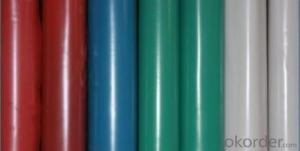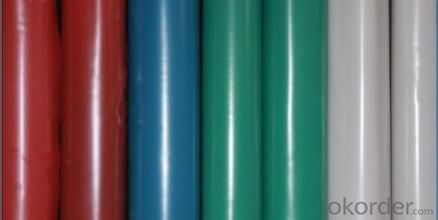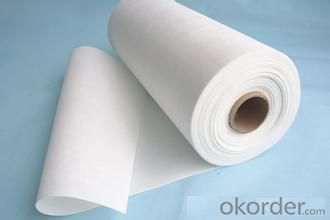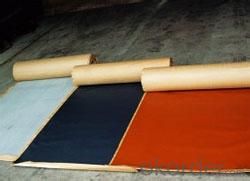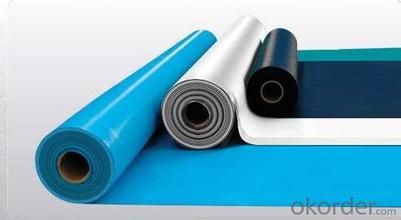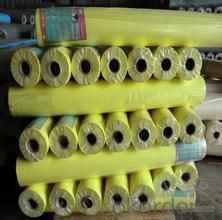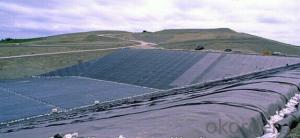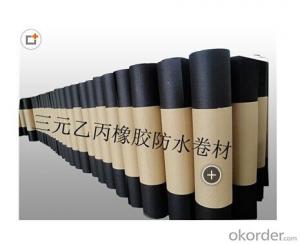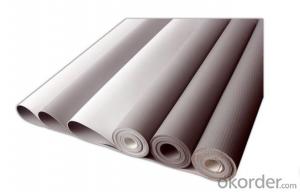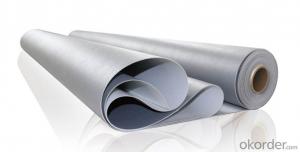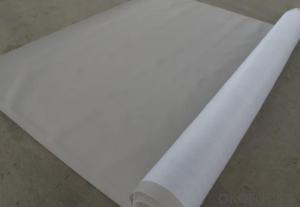PVC Waterproof Membrance for Roofing and Underground
- Loading Port:
- Tianjin
- Payment Terms:
- TT or LC
- Min Order Qty:
- 10000 m²
- Supply Capability:
- 15000000 m²/month
OKorder Service Pledge
OKorder Financial Service
You Might Also Like
Quick Details
Type: | Waterproof Membrane | Place of Origin: | Shandong, China (Mainland) | Brand Name: | CMAX |
Model Number: | Excaid-D | thickness:1.2mm,1.5mm,2.0mm: | Raw mateiral:EPDM rubber | width:1200mm: | Standard:GB18173.1--2006 |
length:20m: | Tear strength:>=25KN/m | break tensile strength >=7.5MPa: | waterproof:0.3MPa,30min | break elongation:>=450%: | usage:building waterproof |
Packaging & Delivery
Packaging Details: | PE membrane and pallet |
Delivery Detail: | within 20 days after receiving downpayment |
Specifications
1.ISO9001,ISO14001
2.Top 3 of Chinese waterproof materials manufacturer
3.Customize product property
4.System accessories
Technical Data:
Tensile Strength N/CM | Normal temperature: ≥60 ; 60°C: ≥30 |
Breaking Elongation % | Normal temperature:≥400 ; -20°C: ≥10 |
Tear Resistance N | ≥20 |
Impermeability, 30 min no leakage | 0.3Mpa |
Low Temperature Bending °C | ≥ -20 |
Heating Shrinking mm | Extension: ≥2 Shrink:≥4 |
Heat Resistance (80°C×168h) | Tensile Strength % : ≥80 ; Keeping rate of adhesive breaking:≥70 |
Alkali resistance (10% ca (oh)2 solution,normal temperature ×168h)) | Tensile Strength % : ≥80 ; Keeping rate of adhesive breaking:≥80 |
Synthetic aging | Tensile Strength % : ≥80 ; Keeping rate of adhesive breaking:≥80
|
FAQ
1.Can you offer free sample ?
Yes , we can offer free sample .
2.What's payment ?
TT or LC both ok .
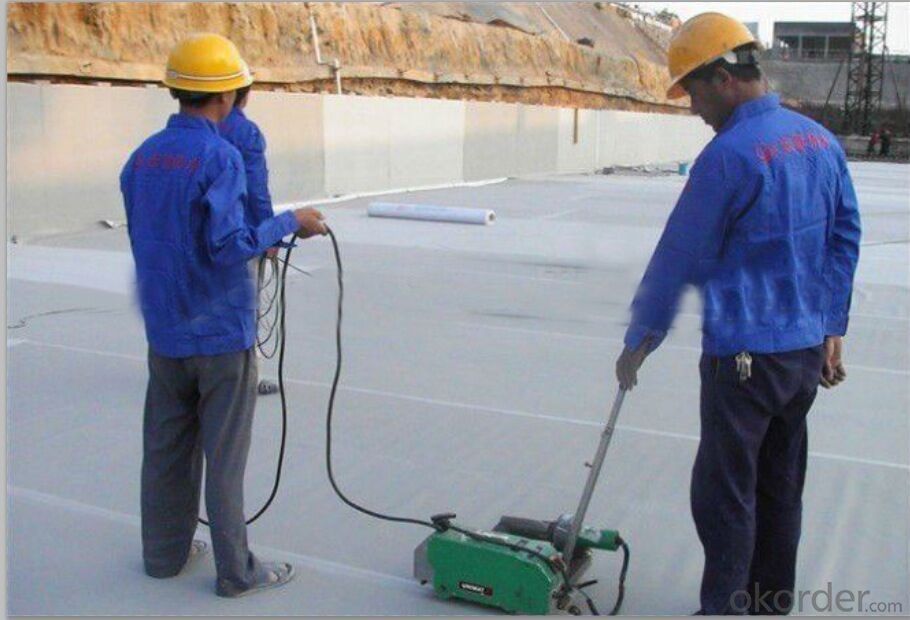
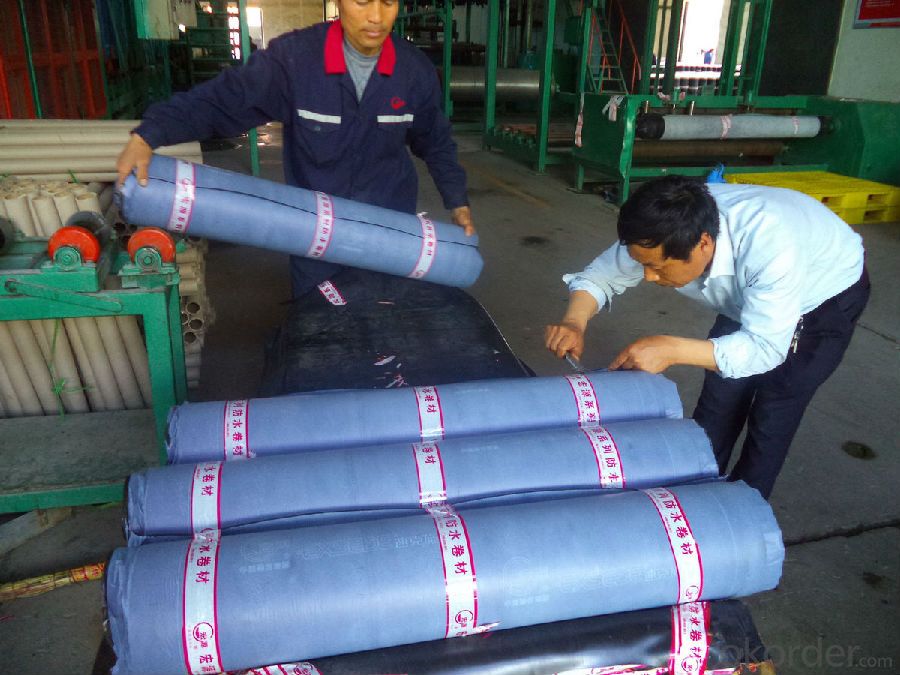
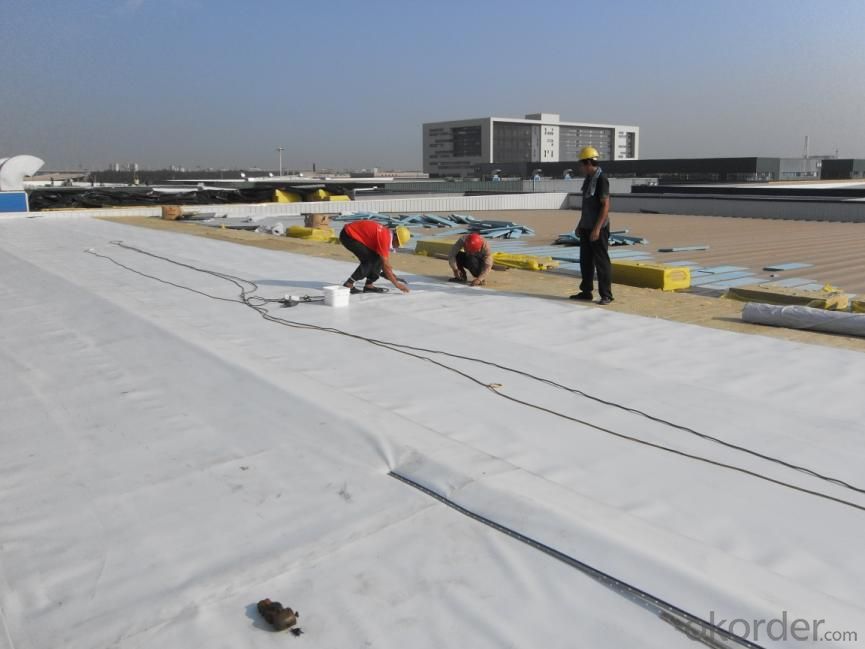
- Q: Can waterproofing membranes be painted over?
- Painting over a waterproofing membrane is indeed possible. Nevertheless, it is crucial to verify the compatibility between the paint and the membrane material. It is advisable to refer to the manufacturer's guidelines or seek expert advice in order to guarantee the paint adheres well and lasts long. Furthermore, prior to applying the paint, the surface must be clean and dry to achieve optimal outcomes. All in all, painting over a waterproofing membrane can improve its aesthetic and offer extra safeguard against UV rays and other environmental elements.
- Q: Are waterproofing membranes suitable for rooftop gardens?
- Rooftop gardens require proper waterproofing to prevent water leakage and structural damage. Waterproofing membranes, made of materials like rubber, PVC, or modified bitumen, create a barrier to stop water from entering the building. These membranes are highly resistant to water penetration. Without reliable waterproofing, excess water from irrigation or rainfall can damage the building, fostering mold growth and deterioration. Waterproofing membranes effectively seal the rooftop, preventing water infiltration and providing a long-lasting solution. Moreover, waterproofing membranes offer additional benefits. They protect against root penetration, safeguarding the roof structure. They also regulate building temperature by reducing heat absorption, enhancing energy efficiency. It's crucial to hire professionals with expertise in waterproofing systems for membrane selection and installation. They ensure proper installation, defect-free membranes, and integration with other roofing components. In conclusion, waterproofing membranes are suitable for rooftop gardens. They protect against water ingress, root penetration, and structural damage, allowing rooftop gardens to thrive while maintaining the building's integrity and longevity.
- Q: Can a waterproofing membrane be used on both interior and exterior surfaces of a structure?
- Yes, a waterproofing membrane can be used on both interior and exterior surfaces of a structure. Waterproofing membranes are designed to create a barrier that prevents water or moisture from penetrating into the structure, whether it is applied on the inside or outside. On the interior, a waterproofing membrane can be used to protect basements, crawl spaces, or other areas prone to moisture intrusion. This helps to prevent water damage, mold growth, and other issues that can arise from excess moisture in these spaces. On the exterior, a waterproofing membrane is commonly used to protect the foundation, walls, and other structural elements from water infiltration. This is especially important in areas with heavy rainfall or where the water table is high. By applying a waterproofing membrane on the exterior, it helps to keep the structure dry and prevents potential damage caused by water seepage. It is important to note that different types of waterproofing membranes are available for specific applications, so the selection of the appropriate membrane will depend on the specific requirements of the project.
- Q: How long do waterproofing membranes last?
- The lifespan of waterproofing membranes can vary depending on various factors such as the type of membrane used, the quality of installation, environmental conditions, and maintenance practices. Generally, high-quality waterproofing membranes can last anywhere from 10 to 50 years. For example, bituminous membranes, which are commonly used in roofing applications, typically have a lifespan of around 20 to 30 years. On the other hand, more advanced synthetic membranes like PVC or TPO can last up to 40 years or even longer. However, it's important to note that these estimations are based on ideal conditions and regular maintenance. Factors such as exposure to extreme weather conditions, improper installation, lack of maintenance, or physical damage can significantly reduce the lifespan of the membranes. Therefore, it is crucial to consult with professionals and follow manufacturer's recommendations for maintenance to ensure the longevity of the waterproofing membranes.
- Q: Are waterproofing membranes suitable for residential applications?
- Yes, waterproofing membranes are suitable for residential applications. They are commonly used in various areas of residential construction, such as basements, foundations, roofs, bathrooms, and balconies, to prevent water penetration and protect the building structure from moisture damage. Waterproofing membranes provide a barrier against water, preventing it from seeping into the structure and causing issues like mold, rot, or structural damage. These membranes are typically made of materials like bitumen, PVC, EPDM, or polyurethane, which are highly effective in repelling water. In residential constructions, waterproofing membranes are installed during the building process or as a part of renovation projects. They can be applied as a liquid coating or in the form of sheets that are laid down and adhered to the surface. These membranes create a seamless and durable barrier that can withstand the test of time. Additionally, waterproofing membranes offer various benefits for residential applications. They help maintain a dry and comfortable living environment by preventing water leaks and dampness. This, in turn, protects the integrity of the building materials, prolongs the lifespan of the structure, and reduces the risk of costly repairs. Furthermore, waterproofing membranes can also enhance energy efficiency by reducing moisture-related heat loss or gain. By preventing water infiltration, they help maintain consistent temperatures inside the house, resulting in lower energy consumption and utility bills. Overall, waterproofing membranes are an excellent choice for residential applications. They provide reliable protection against water damage, improve the longevity of the structure, and contribute to a healthier and more energy-efficient living environment.
- Q: Can a waterproofing membrane be used in earthquake-prone areas?
- Yes, a waterproofing membrane can be used in earthquake-prone areas. In fact, it is highly recommended to use a waterproofing membrane in such areas to protect buildings and structures from potential water damage caused by earthquakes. Waterproofing membranes are designed to create a barrier against water infiltration, which can be crucial in preventing structural damage and maintaining the integrity of a building during seismic events. Additionally, these membranes can also provide some level of flexibility and elasticity, which can help absorb and distribute the forces exerted during an earthquake, reducing the risk of cracks and leaks. However, it is important to ensure that the waterproofing membrane used is specifically designed and tested to meet the requirements of earthquake-prone areas, considering factors such as the intensity and frequency of seismic activity in the region. Consulting with a structural engineer or a waterproofing specialist is highly recommended to determine the most suitable waterproofing system for earthquake-prone areas.
- Q: How does a waterproofing membrane prevent water infiltration?
- A waterproofing membrane is a specialized barrier that is used to prevent water infiltration into structures such as buildings or underground structures. It is typically made of synthetic materials such as rubber, PVC, or bitumen, which are known for their water-resistant properties. The primary function of a waterproofing membrane is to create a physical barrier that water cannot penetrate. It is installed on the exterior surface of the structure, forming a continuous layer that adheres tightly to the substrate. This prevents water from seeping through cracks, joints, or porous surfaces, and instead directs it away from the structure. One of the key ways in which a waterproofing membrane prevents water infiltration is by providing a seamless and impermeable layer. This means that there are no gaps or weak points where water can enter. The membrane is typically applied in multiple layers to ensure a durable and watertight seal, effectively preventing any water from penetrating the structure. Additionally, a waterproofing membrane is designed to be highly resistant to water pressure. It can withstand the hydrostatic pressure exerted by water and prevents it from forcing its way into the structure. This is particularly important for below-ground structures such as basements or foundations that are susceptible to groundwater infiltration. Moreover, a waterproofing membrane is often equipped with additional features to enhance its effectiveness. These may include additives or properties that enhance its flexibility, durability, or resistance to environmental factors such as UV rays or chemicals. These properties ensure that the membrane remains intact and functional over time, effectively preventing water infiltration. In summary, a waterproofing membrane prevents water infiltration by creating a seamless and impermeable barrier that water cannot penetrate. It is designed to withstand water pressure and is installed on the exterior surface of structures to prevent water from seeping through cracks, joints, or porous surfaces. With its additional features, a waterproofing membrane ensures long-term protection against water infiltration.
- Q: Can a waterproofing membrane be used on tunnels with lighting systems?
- Yes, a waterproofing membrane can be used on tunnels with lighting systems. The membrane can effectively protect the tunnel structure from water infiltration while allowing the lighting system to function properly.
- Q: Can a waterproofing membrane be used on storage tanks?
- Indeed, storage tanks can benefit from the application of a waterproofing membrane. These specialized membranes serve as a barrier, preventing the infiltration of water or other liquids into the surface they are applied to. By employing such membranes, storage tanks are shielded from the detrimental effects of leaks, corrosion, and moisture-related damage. Numerous industries, including oil and gas, chemical, and water treatment, rely on waterproofing membranes to uphold the durability and longevity of their storage tanks. Furthermore, these membranes can be customized to meet specific requirements, such as resistance to chemicals, UV exposure, or high temperatures, thus making them well-suited for a diverse array of storage tank applications.
- Q: Can a waterproofing membrane be used in stadiums or sports complexes?
- Stadiums and sports complexes can indeed benefit from the use of waterproofing membranes. It is highly advisable to employ waterproofing solutions in these types of structures to safeguard them against water damage and leaks. The purpose of a waterproofing membrane is to serve as a barrier, preventing water from infiltrating the concrete or other construction materials employed in the stadium or sports complex. This is especially crucial in regions where heavy rainfall or high humidity levels are prevalent. Implementation of a waterproofing membrane on the roofs, walls, and foundations of these edifices helps guarantee their longevity and structural integrity, while also offering a comfortable and secure environment for athletes and spectators alike. Waterproofing membranes are specifically designed to endure the pressures and movements associated with the building, making them an optimal choice for stadiums and sports complexes. Additionally, contemporary waterproofing membranes come in diverse forms, including liquid-applied or sheet membranes. This allows for flexibility in application and compatibility with various construction materials.
Send your message to us
PVC Waterproof Membrance for Roofing and Underground
- Loading Port:
- Tianjin
- Payment Terms:
- TT or LC
- Min Order Qty:
- 10000 m²
- Supply Capability:
- 15000000 m²/month
OKorder Service Pledge
OKorder Financial Service
Similar products
Hot products
Hot Searches
Related keywords
